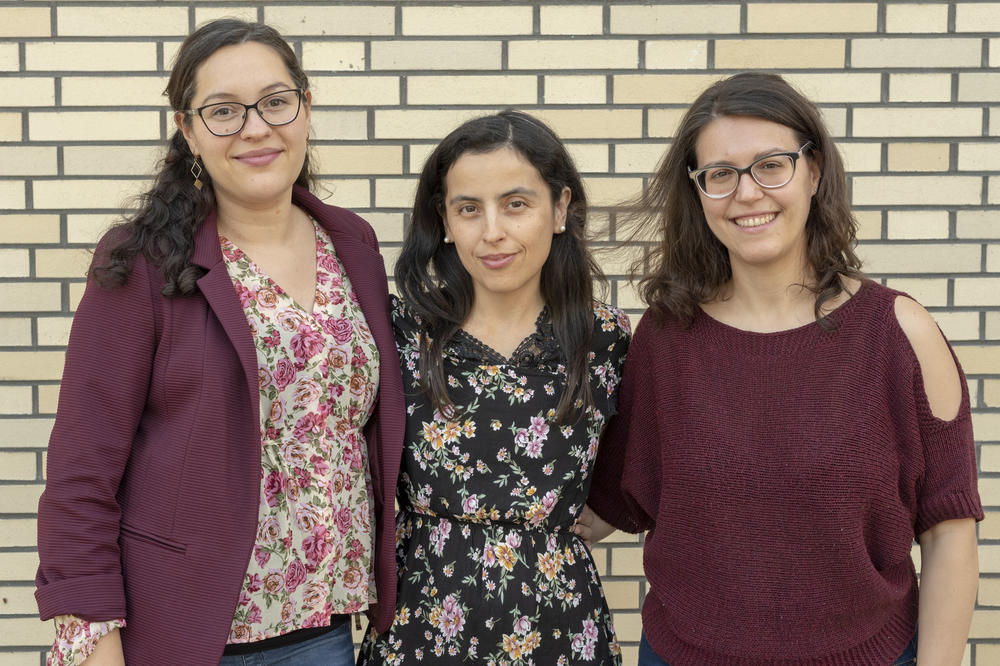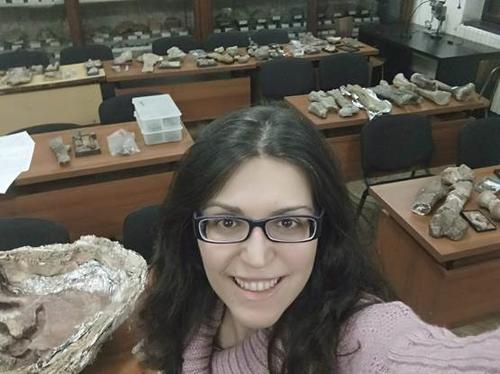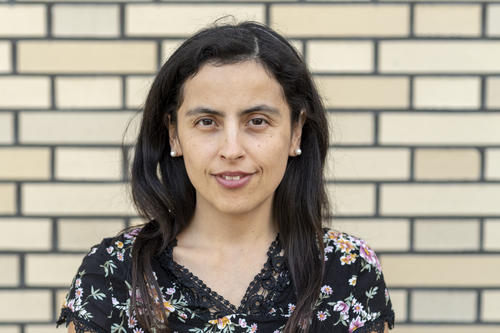The Many Faces of Digitalization
The Berlin higher education program DiGiTal is funding 13 researchers and artists who study digital technologies
Oct 09, 2019
Completely DiGiTal: Fabiola Rodríguez Garzón is the coordinator of the DiGiTal higher education program at Technische Universität Berlin, in which Marcela Suárez and Véronica Díez Día are doing their doctorates (from left to right).
Image Credit: Bernd Wannenmacher
Dr. Véronica Díez Díaz works with dinosaur bones. The paleontologist and geologist lays bones on a turntable and photographs them. After each photo, she turns the disc 30 degrees. She repeats this with the camera, changing its position until she has about 100 images from which a three-dimensional simulation of the bone can be displayed. This method is called “photogrammetry” and is one of several 3D technologies that the scientist views as a tool for her work as well as an object of investigation itself. “Most scientific articles make assertions about findings on bones, but not so much about the 3D models used to obtain this information.” The scientist, who conducts research at Humboldt-Universität zu Berlin and the Natural History Museum, wants to change this. With a guideline on digitization techniques, she hopes researchers will be better able to keep track of work processes.
For Verónica Díez Díaz, digitization initially meant transferring physical objects into 3D objects. In the colloquium of the Berlin Graduate Program Digital Transformation (DiGiTal), she met 12 other researchers and artists who were all grappling with the translation of analog into digital even though each of them brought entirely different research questions to the group.
Digital technologies are at the heart of the projects of 13 researchers and artists funded for three years by the Berliner Programm zur Förderung der Chancengleichheit für Frauen in Forschung und Lehre (BCP), which is part of the DiGiTal program and supports excellent female researchers and artists on their way to a professorship. Their research projects and artistic-scientific projects all feature innovative forms of digitalization. For the first time, 13 Berlin universities are working together here and promoting cooperative doctorates through their programs.
The DiGiTal doctoral candidates are supervised as research associates at universities of applied sciences while writing their doctoral theses at one of the universities participating in the network. The postdoctoral researchers are based at Berlin universities and the artistic staff at Berlin art institutes. In the long term, the program aims to contribute to attracting more female professors to the field of digitalization.
“Digital space is simply an extension of social space and there are power relations in both.” Verónica Díez Díaz
With her project, Dr. Verónica Díez Díaz wants to generate more transparency in science and make it easier to understand work processes. For the geologist, digitization was always a very positive thing. Through DiGiTal, she also came into contact with more critical views of digitalization, such as those of Marcela Suárez Estrada. The political scientist, who holds a doctorate from Freie Universität Berlin, investigates digital violence against women at the Institute for Latin American Studies. She looks specifically at how feminist collectives use digital strategies to resist such violence. According to Suárez Estrada, the Internet and digital technologies are not neutral. “Digitalization makes the body invisible. But behind every computer sit people, men and women,” she says. “Digital space is simply an extension of social space and there are power relations in both.”
Marcela Suárez investigates digital violence against women at the Institute for Latin American Studies, Freie Universität Berlin.
Image Credit: Bernd Wannenmacher
In Latin America, women are afraid to walk certain streets late at night. Also online, many are fearful of expressing an opinion and being victimized because of their gender. Marcela Suárez Estrada has an example from her own life. She is interested in drones, she says, but as a woman, she is discriminated against in some online forums on the subject. “In response to this, women limit themselves to certain websites – just as they do when walking the streets in the evening.” Suárez Estrada examines feminist collectives that focus on this digital violence – and who use digital strategies themselves. Female hackers’ clubs, for example, teach women encryption techniques so that they can counteract digital violence.
DiGiTal makes it possible for a dinosaur researcher to come together with a researcher working on digital violence. The result? Exciting discussions and a productive dialogue, says Marcela Suárez Estrada. “In each colloquium, we discuss whether digitalization could be a commonality that all of our projects share.” “Perhaps the common denominator is that we all work with non-physical things.”
“Designing the program from the outset in an interdisciplinary way across different universities really pays off.” Fabiola Rodríguez Garzón
Fabiola Rodríguez Garzón, coordinator of the DiGiTal program at Technische Universität Berlin, sees the variety of approaches as the strength of the program. “Designing the program from the outset in an interdisciplinary way across different universities really pays off. It is the only way to approach such a complex phenomenon as digitalization,” she claimed. The cooperation between the 13 universities is very successful, she added, which is why she would like to see it become a permanent installation in the Berlin academic landscape.
Marcela Suárez considers herself fortunate to be part of the program. She does not receive financial support, but teaches and supervises students regularly at the Institute for Latin American Studies in Dahlem. According to Suárez, this is particularly important, especially in preparation for a potential professorship. The program focuses on supporting researchers and artists in the predoctoral and postdoctoral phases. Verónica Díez Díaz is grateful for the funding that allows her to continue her research. Last year she won the Digital Female Leader Award in the “Science” category for her work. It proves that dinosaurs and digitalization are not a contradiction in terms.



